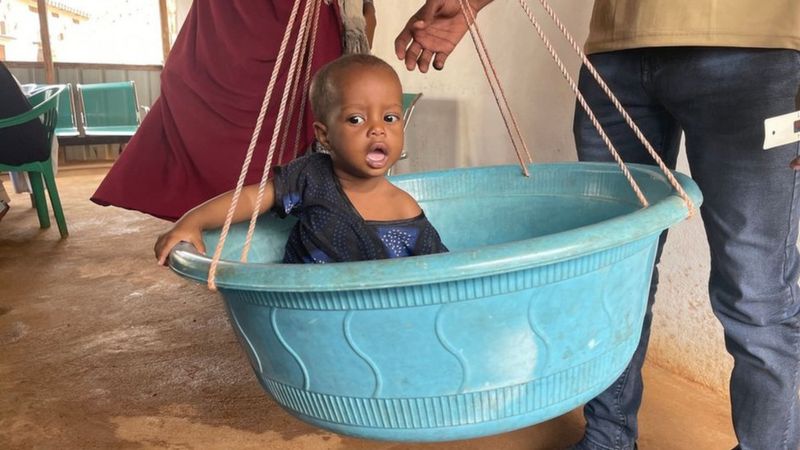‘Do not leave us to starve’: Children in Somalia plead with world leaders to tackle the hunger crisis as famine looms

by Arabnews
Millions of people are facing the risk of hunger as the worst drought in nearly five decades grips the Horn of Africa. In an emotional plea, children in Somalia are urging world leaders to stand with them during this catastrophe.
In a powerful open letter to world leaders, Somali children are calling for the international community to urgently find a solution to the climate crisis as Somalia edges closer to famine.
The letter, written by six children aged between 12 and 15, describes how they have been affected by the prolonged drought, the worst the region has faced in five decades.
“Almost two million children across Ethiopia, Kenya and Somalia require urgent treatment for severe acute malnutrition, the deadliest form of hunger”
From southern Ethiopia to northern Kenya and Somalia, around 22 million people are at risk of hunger as the worst drought in four decades grips the Horn of Africa.
The United Nations says 12 million people in Ethiopia, 5.6 million in Somalia and 4.3 million in Kenya are “acutely food insecure”.
The overall figure has almost doubled from 13 million at the start of 2022, the UN’s World Food Programme said in a January 23 report.
According to the UN children’s agency UNICEF, almost two million children across Ethiopia, Kenya and Somalia require urgent treatment for severe acute malnutrition, the deadliest form of hunger.
It said in September that 730 children had died between January and July in nutrition centres in Somalia, but that the real numbers were likely much higher.
Lacking water, milk and food, and often living in squalid conditions, the youngest become so weak they are vulnerable to diseases such as measles and cholera, and their long-term growth can be restricted. Some 2.7 million children have also stopped going to school, it said.
In an emotional plea, the child signatories are urging world leaders to “stand with us during this time” so that “one day children will grow up in Somalia free of this problem.”
The children describe the impact that hunger is having on families in their community, with some children unable to leave their homes or suffering from deadly diseases as a result of malnutrition.
“In an emotional plea, the child signatories are urging world leaders to stand with us during this time so that one day children will grow up in Somalia free of this problem”
“It’s hard not to worry if your family doesn’t cook food or when you see your neighbours suffer,” they said.
“If you haven’t eaten, it’s hard to understand anything. If your family have no food to give you, you’re not able to play, run or concentrate.”
The latest UN data shows that half of the 15 million population of Somalia is facing acute food shortages, with more than 300,000 people expected to be in famine-like conditions by the end of the year.
Early international intervention during Somalia’s severe drought in 2017 averted a repeat of the 2011 catastrophe, which killed 260,000 people, about half of whom were children aged under five.
The Horn of Africa is one of the regions most vulnerable to climate change, and extreme weather events are occurring with increased frequency and intensity.
“Malnutrition and death rates are soaring, children are too hungry to leave their homes, and they cannot concentrate, play, or go to school. These children are determined to make their voices heard. They won’t let this crisis be forgotten”
Since 2016, eight of the 13 rainy seasons have seen below-average rainfall, according to data from the US-based Climate Hazards Center.
The last famine was declared in Somalia in 2011, when 260,000 people – half of them children under the age of six – died of hunger, partly because the international community did not act fast enough, according to the UN.
At that time, the region had encountered two poor rainy seasons, compared to five in the current drought. Crops, already ravaged by a locust invasion between 2019 and 2021, have been wiped out and livestock has suffered a similar fate.
“These children are bearing witness to the heart-breaking impact that climate-induced hunger is having on the most vulnerable in their community,” said Claire Sanford, Deputy Humanitarian Director at Save the Children UK.
“They understand better than anyone the dire situation facing families in Somalia. Malnutrition and death rates are soaring, children are too hungry to leave their homes, and they cannot concentrate, play, or go to school. These children are determined to make their voices heard. They won’t let this crisis be forgotten.”
A catastrophe in Somalia
Somalia is the hardest hit country, with the drought affecting more than half of its population, about 7.85 million people.
In December, OCHA said the troubled nation was technically not yet in the grip of full-blown famine thanks to the response of aid agencies and local communities. But people were nevertheless suffering “catastrophic” food shortages, it said, warning that if assistance is not scaled up, famine is expected in southern Somalia between April and June.
Agropastoral populations in Baidoa and Burhakaba districts and displaced people in Baidoa town and the capital Mogadishu were most at risk. OCHA warned that by June, the number of people at the highest level on the UN’s five-scale food insecurity classification was expected to more than triple to 727,000 from October, meaning they have dangerously little access to food and could face starvation.